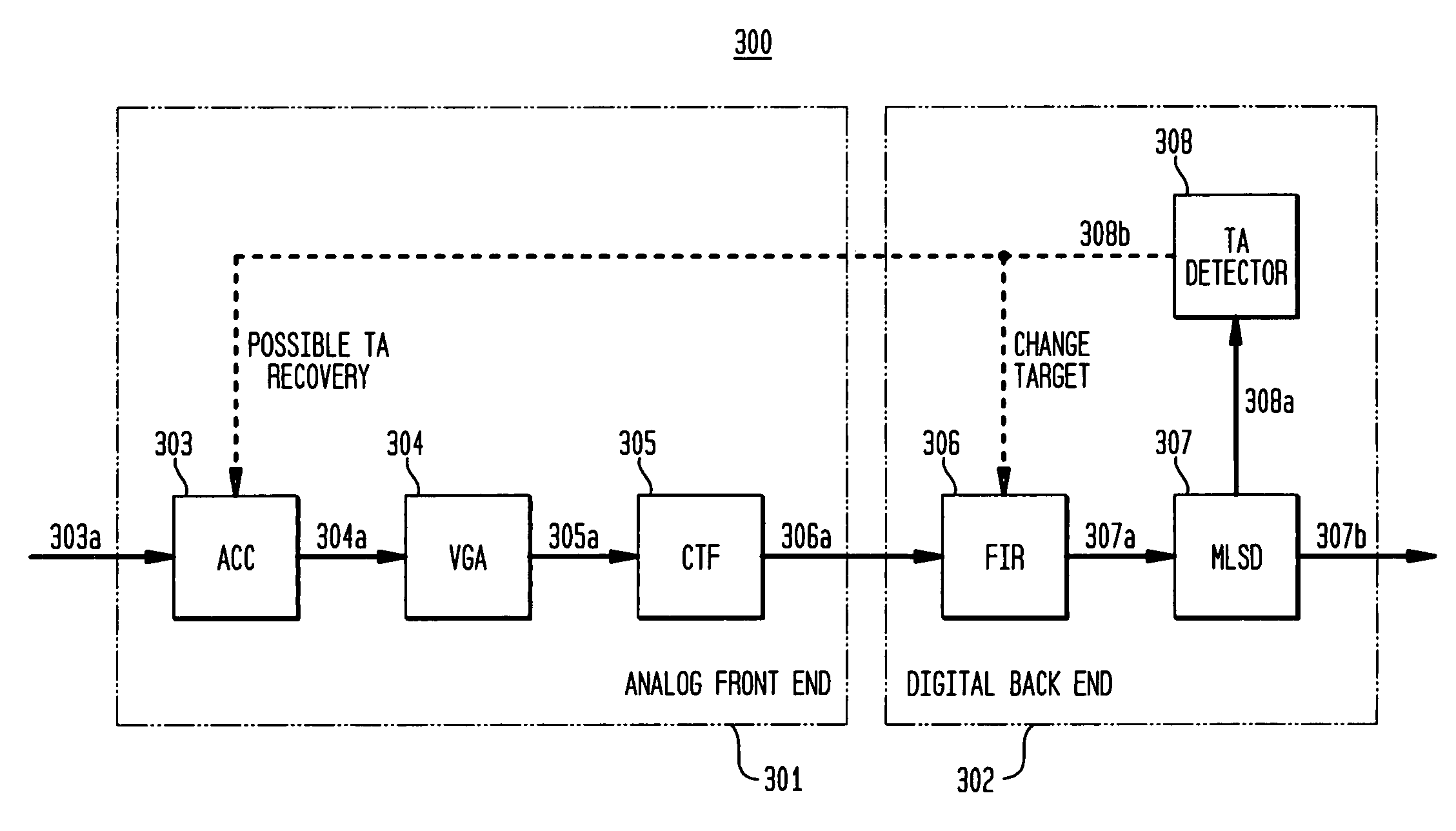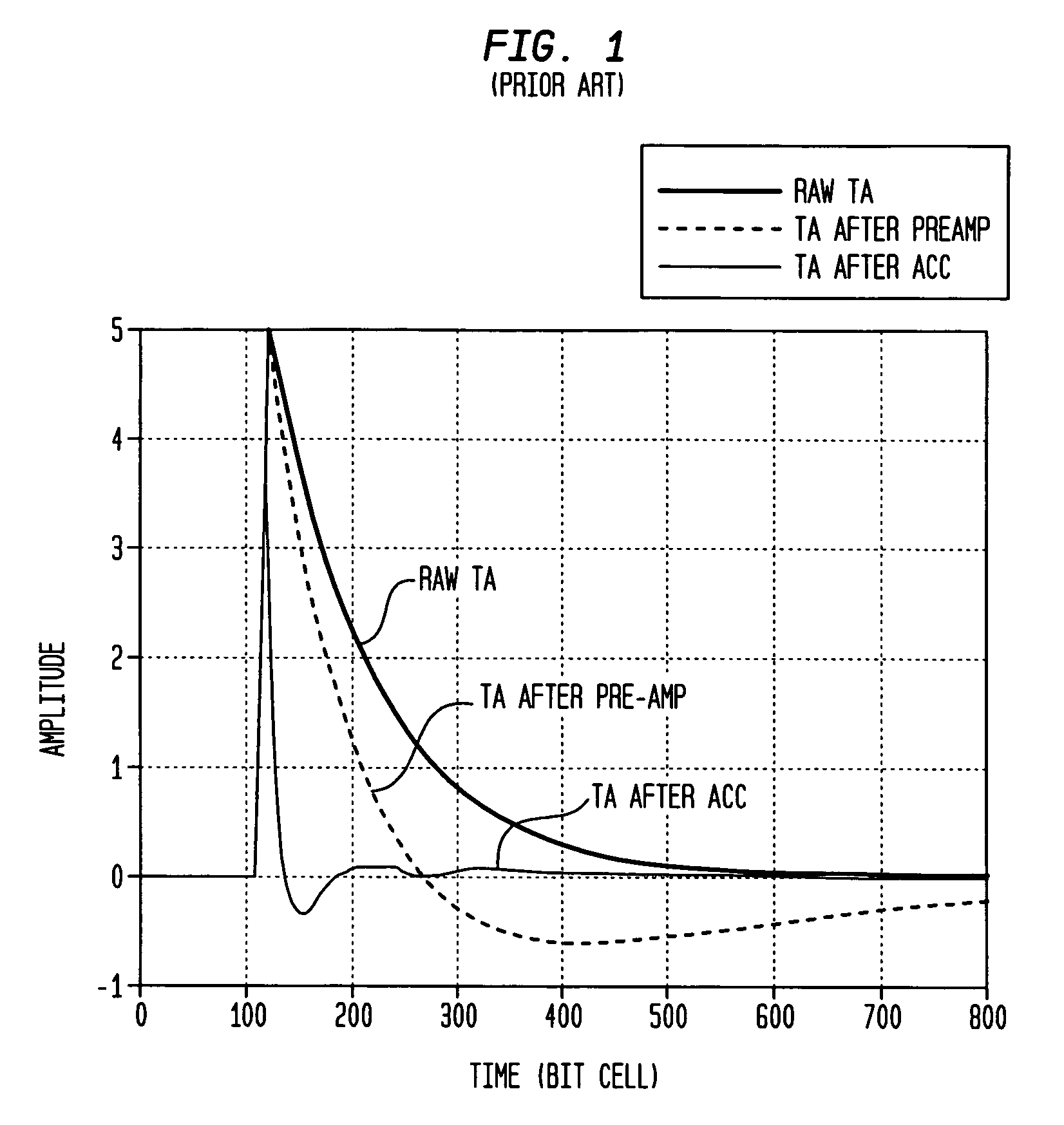Detection of signal disturbance in a partial response channel
a partial response channel and signal disturbance technology, applied in the field of detection of signal disturbances, can solve problems such as erroneous data readings for the period corresponding to the temperature spike, data transmission systems susceptible to noise, and thermal asperity (ta) as the source of nois
- Summary
- Abstract
- Description
- Claims
- Application Information
AI Technical Summary
Benefits of technology
Problems solved by technology
Method used
Image
Examples
Embodiment Construction
[0020]What is needed is a system to detect the presence of small TAs, or similar disturbances, and also, where appropriate, a system to detect their location, for example, within a disk sector. Such a system can use a probabilistic detector typically employed in partial-response read channels, such as a maximum likelihood sequence detector, which typically relies on a Viterbi algorithm. The operation of Viterbi detectors is well known in the art, as described in, e.g., Howald, R., “Vive Viterbi!” Mar. 1, 2002 [retrieved on Sep. 13, 2005], retrieved from the Internet , and U.S. Pat. No. 6,633,615 B1, Oct. 14, 2003, issued to Pekarich et al., both of which are incorporated herein by reference.
[0021]In certain embodiments, the present invention provides a system and / or method for detecting TAs and similar electrical disturbances, and is particularly useful for the detection of relatively small TAs. The detection of TAs is accomplished through the use of a maximum-likelihood sequence de...
PUM
| Property | Measurement | Unit |
|---|---|---|
| electrical | aaaaa | aaaaa |
| length | aaaaa | aaaaa |
| time | aaaaa | aaaaa |
Abstract
Description
Claims
Application Information
 Login to View More
Login to View More - R&D
- Intellectual Property
- Life Sciences
- Materials
- Tech Scout
- Unparalleled Data Quality
- Higher Quality Content
- 60% Fewer Hallucinations
Browse by: Latest US Patents, China's latest patents, Technical Efficacy Thesaurus, Application Domain, Technology Topic, Popular Technical Reports.
© 2025 PatSnap. All rights reserved.Legal|Privacy policy|Modern Slavery Act Transparency Statement|Sitemap|About US| Contact US: help@patsnap.com



